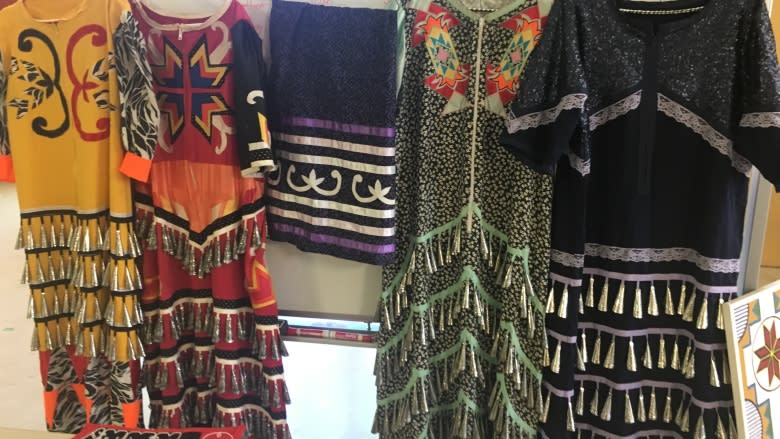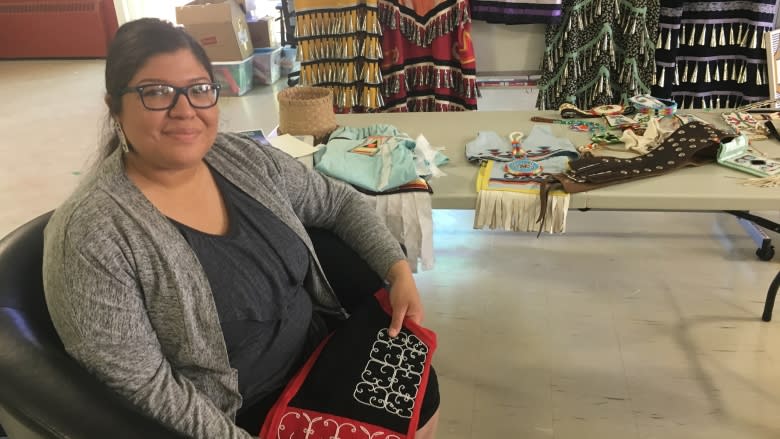'Keeping our culture strong': Mi'kmaq artisans proud of cultural revival
A wigwam is taking shape in a field at Abegweit First Nation in Scotchfort, P.E.I. — Junior Peter-Paul has arranged piles of spruce poles, birch and maple, roots and birch bark he's carefully collected.
Peter-Paul, who's well-known for his drumming at cultural events and sharing Mi'kmaq culture in Island classrooms, began making wigwams only a year ago, learning from a friend who had been taught by his father.
"When I first started this, I felt my ancestors were surrounding me," he said. "I felt the presence with them ... cause they'd done it for a long time, and that was great for me."
Peter-Paul is part of a revival of cultural pride among Mi'kmaq artisans on P.E.I.
"This is our chance, this is my chance, to teach as much as I can for these children to know about the history of Mi'kmaq people, when they used to make their own wigwams."
"It's a form of reconciliation to recognize the Mi'kmaq people on the Island ... and the pride that we have," he said.
'Passing down that knowledge'
At the Mi'kmaq Confederacy offices in Charlottetown, Junior's daughter Melissa Peter-Paul is sewing finishing touches on ceremonial regalia for her her one-year-old son.
Peter-Paul started learning beadwork from her mother when she was 11, and still has the very first thing she made — a beaded barrette.
"I just kept showing that interest whenever I would see my mother making regalia or doing beadwork," she said. "She was passing down that knowledge to me."
"I'm so grateful she did that because now, if I'm able to teach somebody to do that and pass that on, and they're able to teach somebody, then we're keeping our culture strong."
After learning beadwork, Melissa moved onto making regalia and jingle dresses, which are worn during powwows and ceremonial events and have up to 365 bells attached.
"It's therapeutic for me," she said of her creative work. "It's my strength."
Peter-Paul weaves baskets, embroiders with quills and also paints — not only because she is driven as an artist, but also because she feels responsibility to her heritage, she said. Only a couple of people are left in her family who know the Mi'kmaq tradition of basket-making, she said, so she's trying to practice to keep up her skills.
'Drawn to the camera'
Someone who has made it her mission to capture and honour Mi'kmaq traditions and artistry is self-taught Mi'kmaq photographer Patricia Bourque.
"I think I was drawn to the camera since I was a little girl,' said Bourque. "Once I got my driver's license I'd take my mom's car and go."
Nine years ago Bourque left her job in the health field to focus on photography, and now uses that skill in her job as media content creator with Film PEI.
"I've photographed every powwow for the last 10 years," Bourque said. "So many colours and textures, and you can capture the passion of the people involved."
Her favourite photo is one taken of a friend wearing traditional male regalia.
"We went on sandstone rocks at sunset — it was perfect, the lighting is everything! I love the golden hour," Bourque said.
'I smudge everything'
All three artisans incorporate their traditional beliefs and practices into their work.
"I always smudge every morning especially if I'm going to work on traditional stuff like this," said Junior Peter-Paul. "Even when I harvest I offer tobacco to the tree, that I'm going to take the life away from it."
His daughter Melissa does the same, she said. "When you're making anything, you're praying, and all that goes into the regalia."
Bourque also offers tobacco before she ventures out on a photo shoot.
"I pray for vision, I pray for direction and I pray for protection. I respect the land and the animals and ask before taking the picture. I don't chase the animals — if the eagle and foxes want to pose, they will," Bourque said.
You can see displays of Mi'kmaq artistry, demonstrations and performances at the P.E.I. Indigenous cultural space at the Cavendish Tourism Information Centre.
More P.E.I. news





